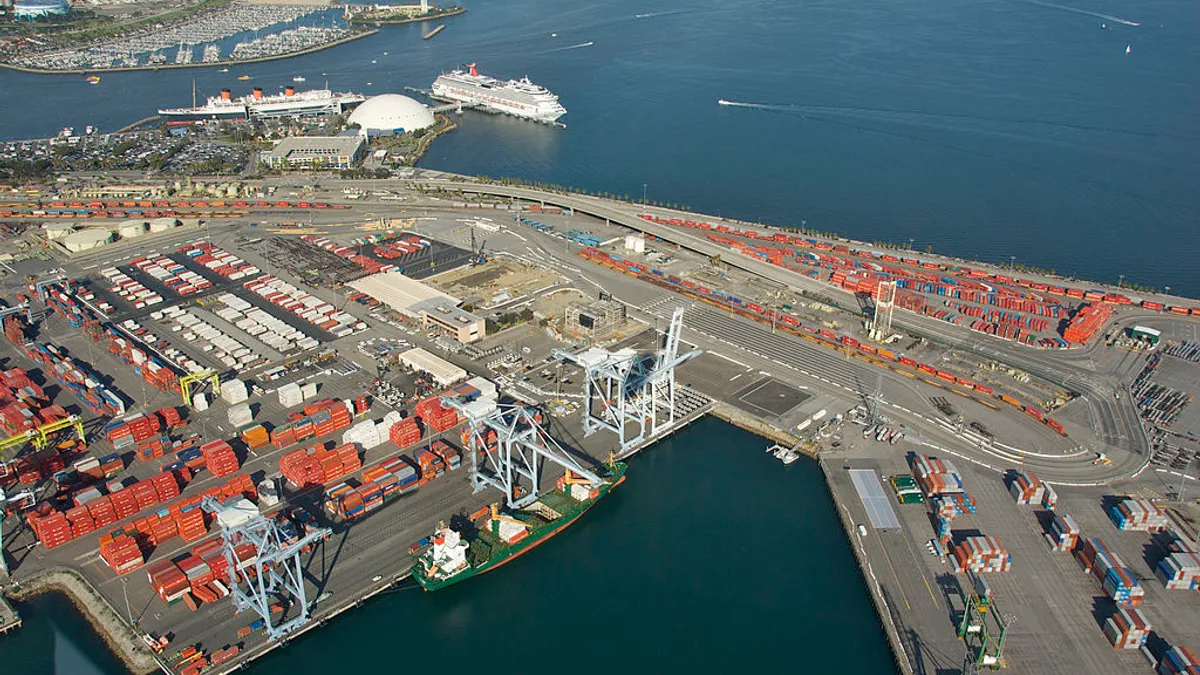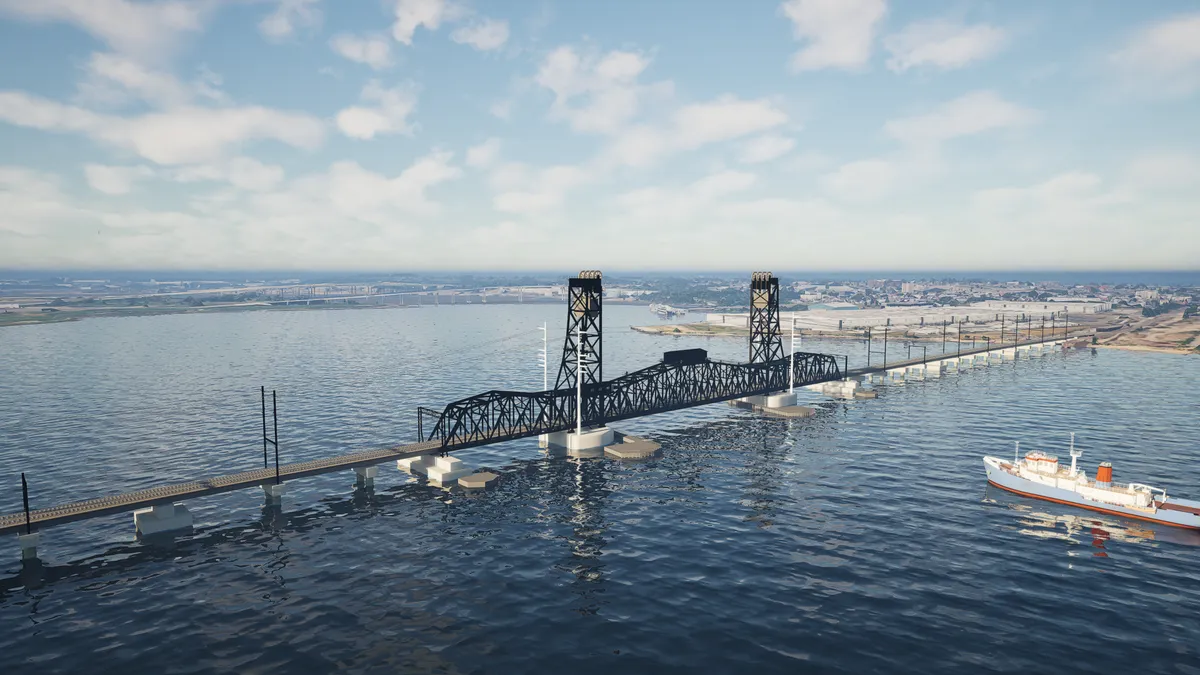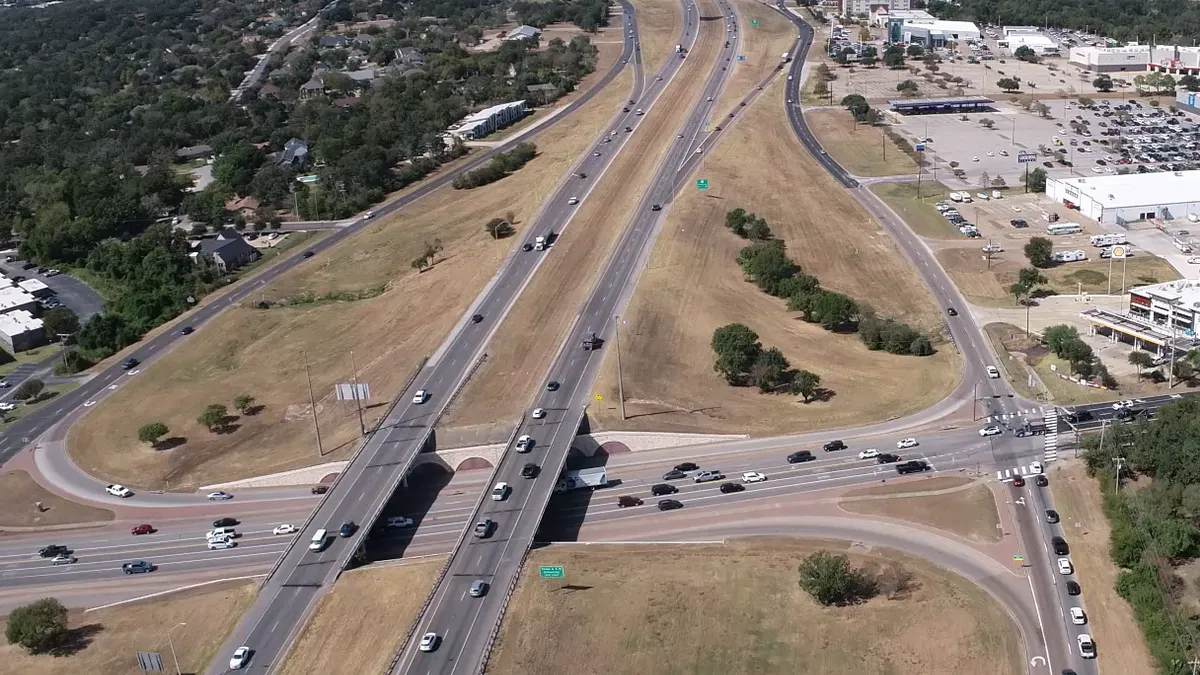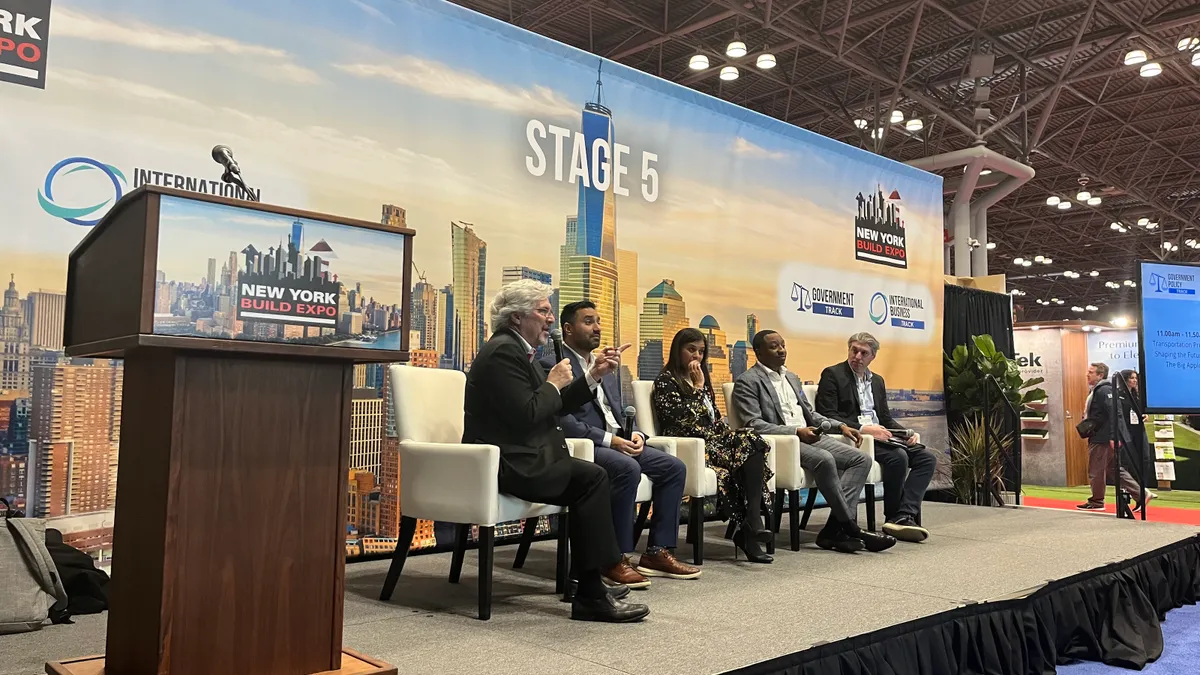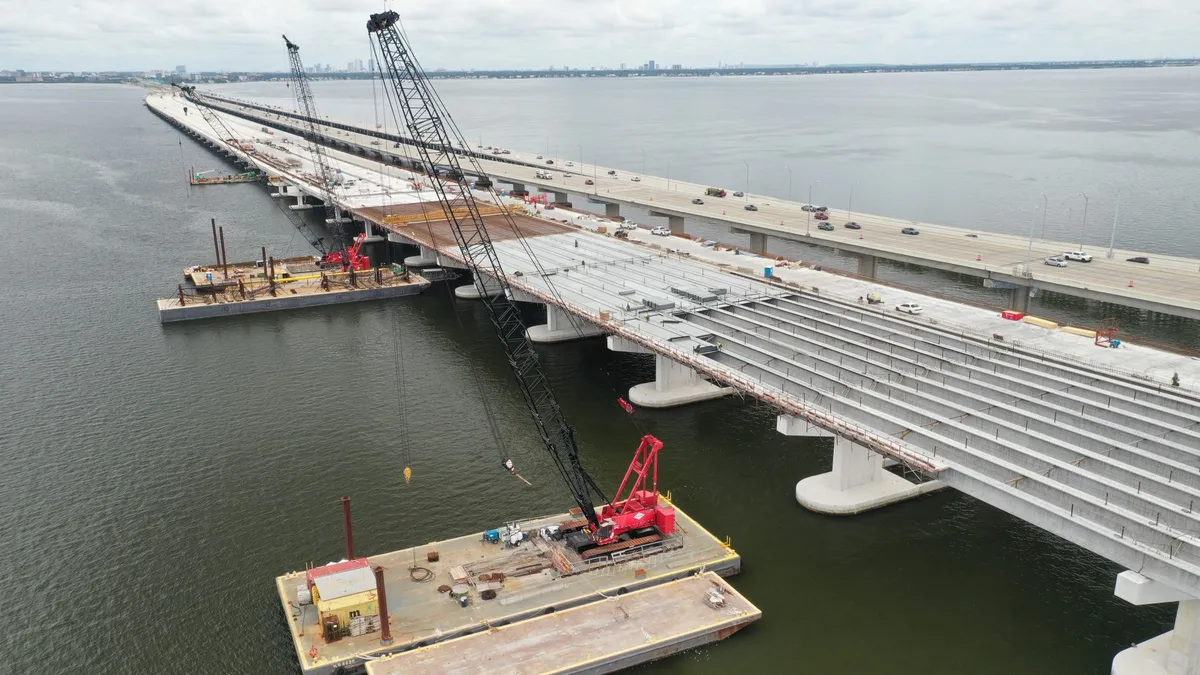The more than 900 ports in the United States move approximately 99% of the nation’s goods, and the $4.6 trillion they generate constitutes 26% of all economic activity in the country, according to the American Society of Civil Engineers. That segment of the supply chain employs more than 23 million people in port-related jobs, according to a 2015 report from the American Association of Port Authorities.
Despite the growth, American ports and the agencies and companies that run and build them are facing challenges. Their capabilities are being strained by the arrival of larger, post-Panamax ships. Older facilities are competing with newer and bigger ports that have embraced automation and energy efficiency. And construction companies specializing in port construction must schedule work around the loading and unloading of massive tanker ships, making even smaller, targeted renovations a chore to plan and execute.
As a result, stakeholders in today's ports are looking to revamp construction, renovation and operations. New technology and additional capacity improves efficiency, mixed-use development diversifies revenue streams and energy efficiency improvements help to justify the often-lengthy and complex timelines of a port construction job.
The challenge of port construction
Working in an active port requires tight coordination with port personnel and shipping companies. That's according to Larry Augustine, the lead development engineer working with the Hawaii Department of Transportation on Johnson Controls’ behalf to update the state's port lighting to LED.
Although they are given ship arrival and departure schedules in advance, the port renovation project has had to stop on occasion to accommodate shifts in the port’s timetable. “We’ve had to shut down and move away and let them do their thing,” said Daniel Maxwell, project executive for Johnson Controls. “On one of the [ports], I had to pay $21,000 in standby fees [including payroll] because a crew from the mainland had to step off the job for three days.”
Project teams typically build enough time into the schedule to account for off days caused by port operations, Augustine said.
The Hawaii port LED replacement project is part of the largest energy savings performance contract (ESPC) for any single state government and the biggest such deal for Johnson Controls, Augustine said. ESPCs allow states and federal agencies to use projected savings from energy projects to finance those and other construction initiatives.
The HDOT project, for example, will save approximately $2.5 million a year on port energy costs once all the current lighting has been replaced with LED, Augustine said. The state calculated those savings across a 20-year period and allowed HDOT to use that amount to finance the LED renovation and other port-related projects. All 50 states, along with Puerto Rico and Washington, DC, have enacted laws that support ESPCs at some level, but because the payoff comes from energy savings, those with the highest energy costs are typically the ones that can benefit the most from the program.
Automation will improve efficiency at busy ports
Offering the same turnaround time for larger ships as for smaller ones means port operations have to become more efficient, said Joshua Brogan, vice president at global management consulting firm A.T. Kearney. Since the Great Recession, however, port operators have not been making investments at the scale necessary to do so.
A shift in technology currently underway could change that. “I think automation will be the next big story over the next 10 years,” Brogan said. The ability to move and organize containers quickly, he said, will be one of the ways ports can differentiate their service offerings, so automated cranes, container selection, movement within the port and container delivery from the docks to trucks and rail cars are all on the table.
The subject of automation is a touchy one among port workers. Even so, the International Longshore and Warehouse Union (ILWU) has the same number of workers today as it did in 1952 and yet West Coast port traffic has increased by 14 times during that period, according to The San Francisco Chronicle. The rank-and-file members of the ILWU recently voted to approve a three-year extension to its contract with the Pacific Maritime Association, a deal that includes a shift toward automation that will most likely cost some longshoremen their jobs.
“That’s the direction," Brogan said, “but there is a human toll.”
A robust communication system is needed to make port automation possible on a large scale, said Gary Anderson, senior vice president of business development for Malvern, PA–based wireless network infrastructure company Rajant. “Every port is moving toward automation, or considering it, because of problems they have in being able to do things efficiently,” he said. Even ports that are equipped with fiber technology are installing wireless systems as a backup.
Paramount is having a system that can provide multiple frequencies, so data has multiple pathways, allowing it to handle the volume of mobile devices at work at a port facility, Anderson said. The number of devices is expected to increase along with the level of automation.
Post-Panamax, ports need more space
At the core of the capacity issue, however, is how a port's physical infrastructure will handle large ships.
Fort Lauderdale, FL–based Moss is working with joint venture partner Kiewit to expand the Port Everglades facility in Broward County, FL. Its depth of water and berth space have become issues for both cruise and container ship traffic.
Dick Slater, vice president and project executive at Moss, said a port berth that could previously handle four ships simultaneously might now only be able to handle two or three because ships are getting bigger. And gantry cranes that load and unload materials have to be higher to accommodate the new ship height. Such updates come at a cost to both shipper and port revenues. “While ports are making adjustments, ships can’t come in fully loaded," he said.
The temporary workaround of lighter cargo loads is something both parties will have to live with until dredging is complete and new berth space is built. “As much as ports want to handle goods, the ships need to move goods,” Slater said.
Nearby development brings in revenue
One way ports are trying to grow their bottom lines while raising money for capital improvements is through the development of unused, port-adjacent land.
The San Diego Unified Port District is revamping its port area. Developer 1HWY1 said it wants to turn the area in to a mixed-use district, complete with retail and entertainment areas, as well as new space for port businesses. That's not the norm for most ports, according to James Martell, president of Transwestern's North American office and industrial development business, Ridge Development.
“Ports are more interested in [development] that will increase port activity, like container volume, versus more passive uses like residential,” Martell said. Although in some cases, the best use may be something other than a primary port, "the port is in the business of creating jobs and revenue from port activity first and foremost," he said.
In most port-adjacent developments, the port will hand over the property to a developer under a long-term lease and receive rent. And in most deals, the lease would most likely require that the developer increase the net volume of port business by moving a certain tonnage of goods.
The industry is in a period of flux as ports undergo necessary renovations and steer their operations toward increased automation. Yet the ports undertaking these transformations today will see a payoff.
“The ports that really want to stay financially in tune are looking years down the road," Slater said.


